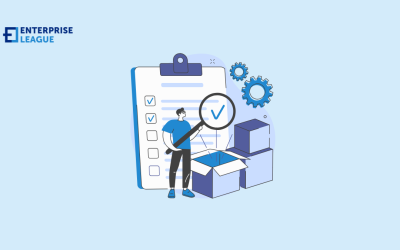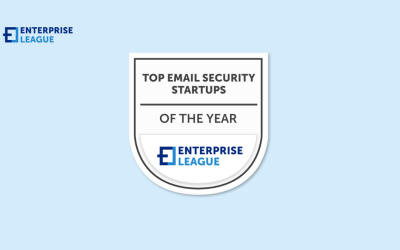Prototyping Next-Gen MVPs has become a disruptive methodology that connects creativity and execution. This methodology helps companies realize their ground-breaking ideas by going beyond standard minimum viable products (MVPs) and covering a more comprehensive range of applications and sectors. This post contains all the information you require regarding the Next-Gen MVP prototype. Now, let’s get started!
The dynamics of next-gen MVPs
The Next-generation MVPs can include tangible prototypes, simulations, and even hands-on product demos; they are not only restricted to digital items. The secret is to distill the idea down to its most basic form and deliver it in a manner that facilitates insightful criticism and affirmation.
Next-generation MVP development services are a highly iterative approach that involves ongoing development based on user insights. By using an agile strategy, the product or service is more likely to succeed in the market since it is specifically designed to fit the demands and preferences of the target audience.
Crucial features of next-gen MVPs:
- customer-focused;
- flexibility;
- adaptability;
- decisions based on data;
- iterative process.
Revolutionizing industries with next-gen MVPs
Across a broad range of industries, the impact of next-generation MVP prototyping is apparent, revolutionizing the process of developing and introducing goods and services. Here are some instances of how next-generation MVPs are transforming particular industries:
Financial technology (FinTech) sector
In order to stay ahead in a world where flexibility is essential, the FinTech industry uses Next-Gen MVPs for everything from decentralized finance (DeFi) trials to optimized mobile banking experiences.
Healthcare and biotech innovations
Best practices and guidelines for MVP prototyping
It is crucial to adhere to a set of best practices and principles that guarantee efficient ideation, validation, and refinement to realize the promise of a next-generation MVP prototype fully. Here are some essential ideas to think about:
Focus on essential features
The key is concentrating on the elements that best represent the primary value proposition. The aim is to present a condensed version that encapsulates the idea rather than overwhelm users with various features.
Focusing on the essentials allows inventors to develop and test the core components of their concepts quickly. This strategy aligns with the agile technique, enabling speedy iterations and modifications in response to customer feedback. When user attention is a valuable resource, minimalism becomes the guiding concept.
Rapid iteration and user feedback
The next-generation MVP prototype is an iterative method with a focus on ongoing improvement and feedback. Collect user input as frequently and as early as you can using a variety of techniques like surveys, user interviews, and usability testing. Give the feedback a thorough analysis, then utilize it to inform data-driven prototype changes.
Maintaining design simplicity
One of the main components of successful MVP prototyping is design simplicity. It’s all about designing an interface that people can use naturally and navigate without much help.
Prototyping goes more quickly with a simple design, improving the user experience. Overly complicated ideas might cause misunderstandings and impede rapid iterations. Creators make sure that their MVP prototypes are not only practical but also user-friendly right away by following the design simplicity principle.
Cross-functional collaboration
The next-generation MVP prototype necessitates collaboration amongst multiple teams within the business; it is not a compartmentalized undertaking. Product managers, designers, engineers, and marketers should all be involved to guarantee a comprehensive viewpoint. By using a cross-functional approach, the prototype may be more aligned with the overall product strategy, and user needs can be better understood.
Data-driven decision making
By utilizing data analytics, MVP prototyping facilitates well-informed decision-making. From performance measurements to user behavior patterns, every step of the prototype’s journey is closely examined.
Data-driven insights give authors a refining road map. Creators can find chances for improvement, preferences, and pain spots by examining user interactions. MVP prototyping is no longer a wild west endeavor but a calculated process directed by verifiable data thanks to this empirical method.
Conclusion
Next-generation MVP prototyping has completely changed the way ideas are realized by shortening the time it takes to go from concept to market. This transformative strategy involves adopting a mindset of constant learning, adaptability, and user-centricity rather than merely producing prototypes.
Next-Gen MVP prototype will continue to be a vital tool for businesses looking to turn their ideas into actual, tangible products as the technology industry develops. Organizations may effectively navigate the dynamic terrain of innovation with agility, efficiency, and a comprehensive user understanding by adopting its principles and leveraging data-driven insights.
More must-read stories from Enterprise League:
- Unique ways to show your employees you care about them.
- The relevance of print marketing and how to make it work for your business.
- Best marketing tools for startups that are worth trying.
- The best apps for entrepreneurs that will help you achieve your goals.
- Learn how to deal with rude customers in a creative way.
Related Articles
How to achieve consistent product quality on a production line with digital solutions
From automated inspections to data-driven decisions, lets see how you can achieve consistent product quality on a production line with digital solutions.
Top 16 email security startups you should know in 2025
From inbox monitoring to automated threat response, these innovative email security startups are building the future of digital communication protection.
Hybrid, remote or in-person: Which work model is right for you?
In this article, you will learn about the unique features of each work model and the key factors to consider when deciding which one suits your needs.
How to achieve consistent product quality on a production line with digital solutions
From automated inspections to data-driven decisions, lets see how you can achieve consistent product quality on a production line with digital solutions.
Top 16 email security startups you should know in 2025
From inbox monitoring to automated threat response, these innovative email security startups are building the future of digital communication protection.






